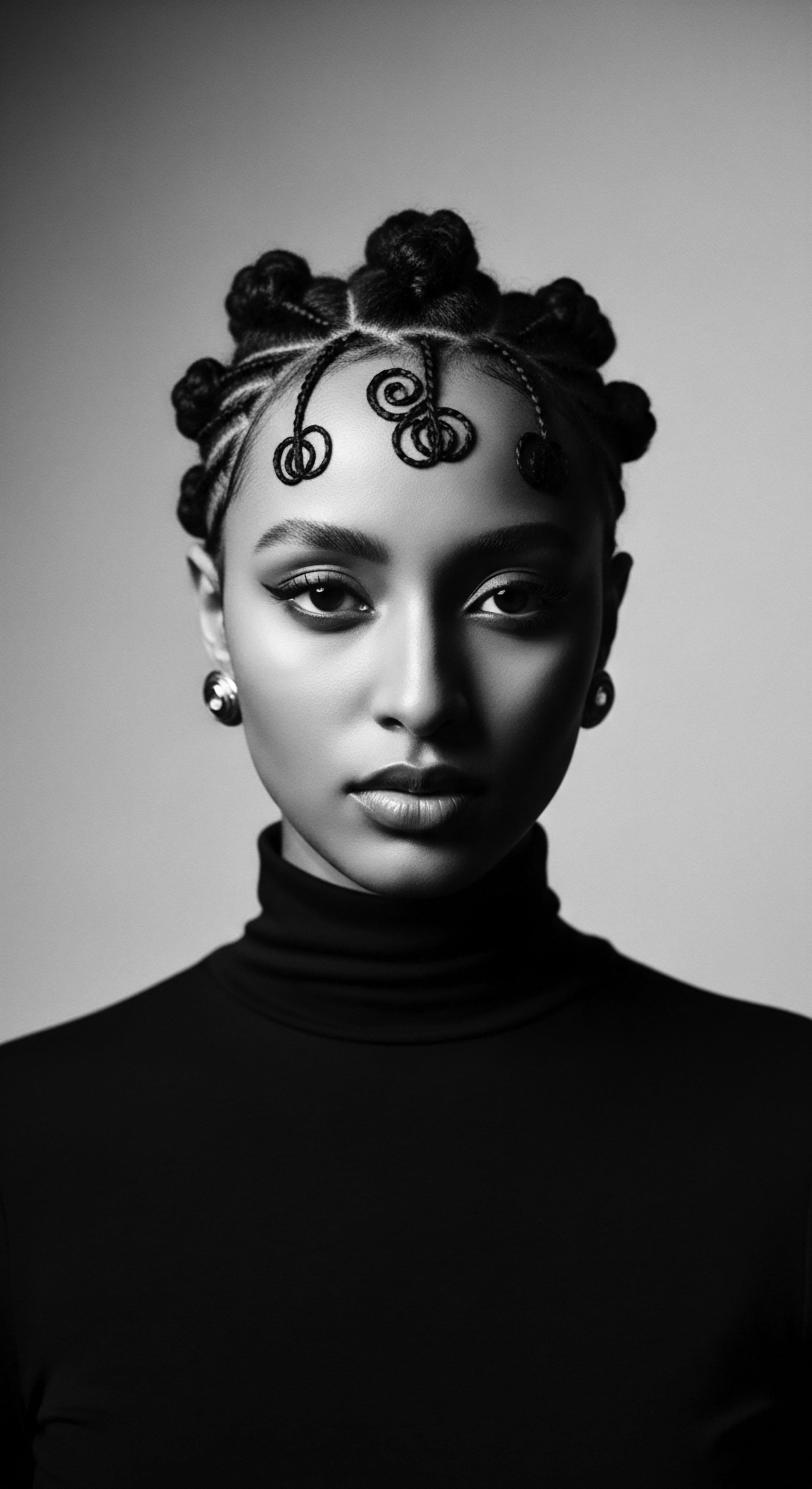
Roots
The stories whispered through generations, carried in the very coil and curve of a strand, speak of more than mere appearance. They tell of resilience, of a deep connection to lineage, and of an undeniable truth ❉ African hairstyles have always been a living archive, preserving identity even as historical currents sought to erase it. Consider the profound journey each textured coil has taken, from its biological blueprint, offering natural protection in sun-drenched lands, to the intricate patterns that once mapped out entire social universes. This journey begins not with styling tools, but with the very essence of the hair itself, a unique biology that birthed practices deeply attuned to its structure and inherent needs.
In pre-colonial African societies, hair was never simply an aesthetic choice. It functioned as a complex communication system, a visible language understood across communities. A person’s hairstyle could instantly convey their age, marital status, social rank, ethnic identity, or spiritual beliefs. For instance, among the Yoruba People of Nigeria, intricate styles were not just visually compelling; they held deep spiritual significance and signaled community roles (Afriklens, 2024).
The skilled braiders, held in high esteem, crafted forms like “Irun Kiko” (thread-wrapping) which spoke of femininity, marriage readiness, or ceremonial transitions to adulthood (Afriklens, 2024). A woman’s tidy, well-plaited hair was considered a mark of beauty, rooted in the Yoruba saying, “Irun ni ewa obinrin,” meaning “the hair is the beauty of a woman” (Akinbola & Akinbola, 2023). This understanding extends to the Himba tribe in Namibia, whose distinctive dreadlocked styles, coated with red ochre paste, symbolized their connection to the earth and their ancestors (Afriklens, 2024).
African hairstyles, far from being mere adornments, served as a sophisticated visual language, articulating social standing, spiritual beliefs, and communal belonging.
The very anatomy of textured hair, with its unique helical structure, presented both challenges and opportunities for care and styling. Its natural coil pattern, often oval in cross-section, allows for exceptional volume and unique shaping possibilities, yet also demands specific approaches to moisture retention and detangling to prevent breakage. Ancient practices intuitively understood these biological realities.
They developed systems of care that honored the hair’s inherent characteristics, rather than fighting against them. These systems often involved natural ingredients derived from the immediate environment.
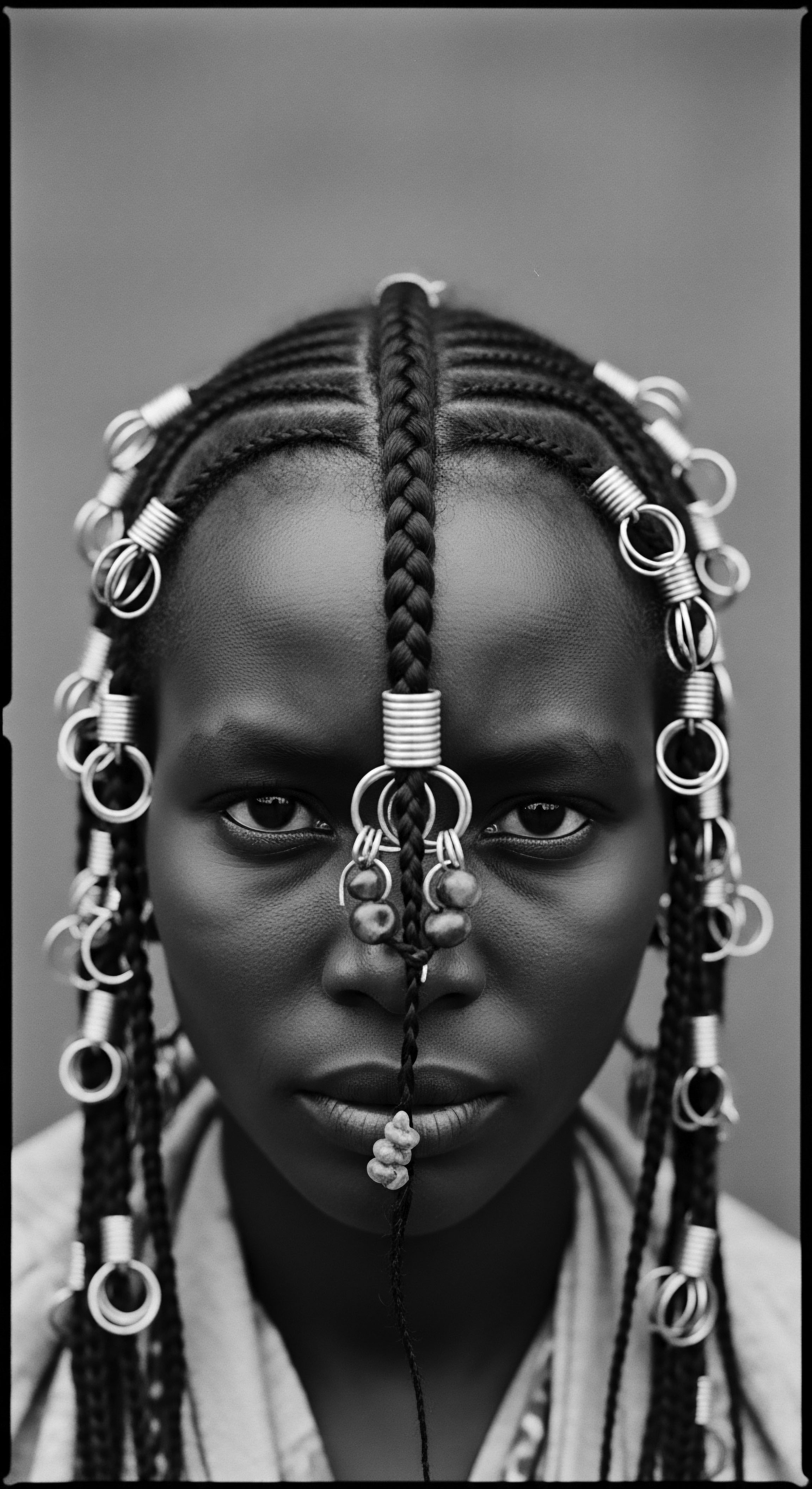
How Did Hair Structure Guide Ancient Care?
The inherent characteristics of textured hair—its elasticity, its propensity for shrinkage, and its tendency to dryness due to the open cuticles—were not viewed as flaws by ancestral communities. Quite the opposite. These attributes guided the development of hair care rituals centered on moisture, protection, and gentle handling. The tight coils of many textured hair types offer natural insulation for the scalp, a biological advantage in diverse climates.
However, this structure also means natural oils struggle to travel down the hair shaft, necessitating external application. Ancestral practices instinctively countered this, using rich plant oils and butters to seal in moisture and provide a protective layer.
Consider the ancient use of ingredients such as Shea Butter (Vitellaria paradoxa), which has been revered in African beauty rituals for centuries. Extracted from the nuts of the shea tree, often called “The Sacred Tree of the Savannah,” it served as a versatile moisturizer for both skin and hair, adding natural shine and facilitating braiding (Sharaibi et al. 2024). Other plants, like Ziziphus spina-christi, were pounded and mixed with water for hair washing, or used for their anti-dandruff properties, as recorded in ethnobotanical studies in Ethiopia (Woldu et al.
2025). This deep traditional plant knowledge highlights a profound connection to the land and a system of wellness practices that predated modern chemistry.
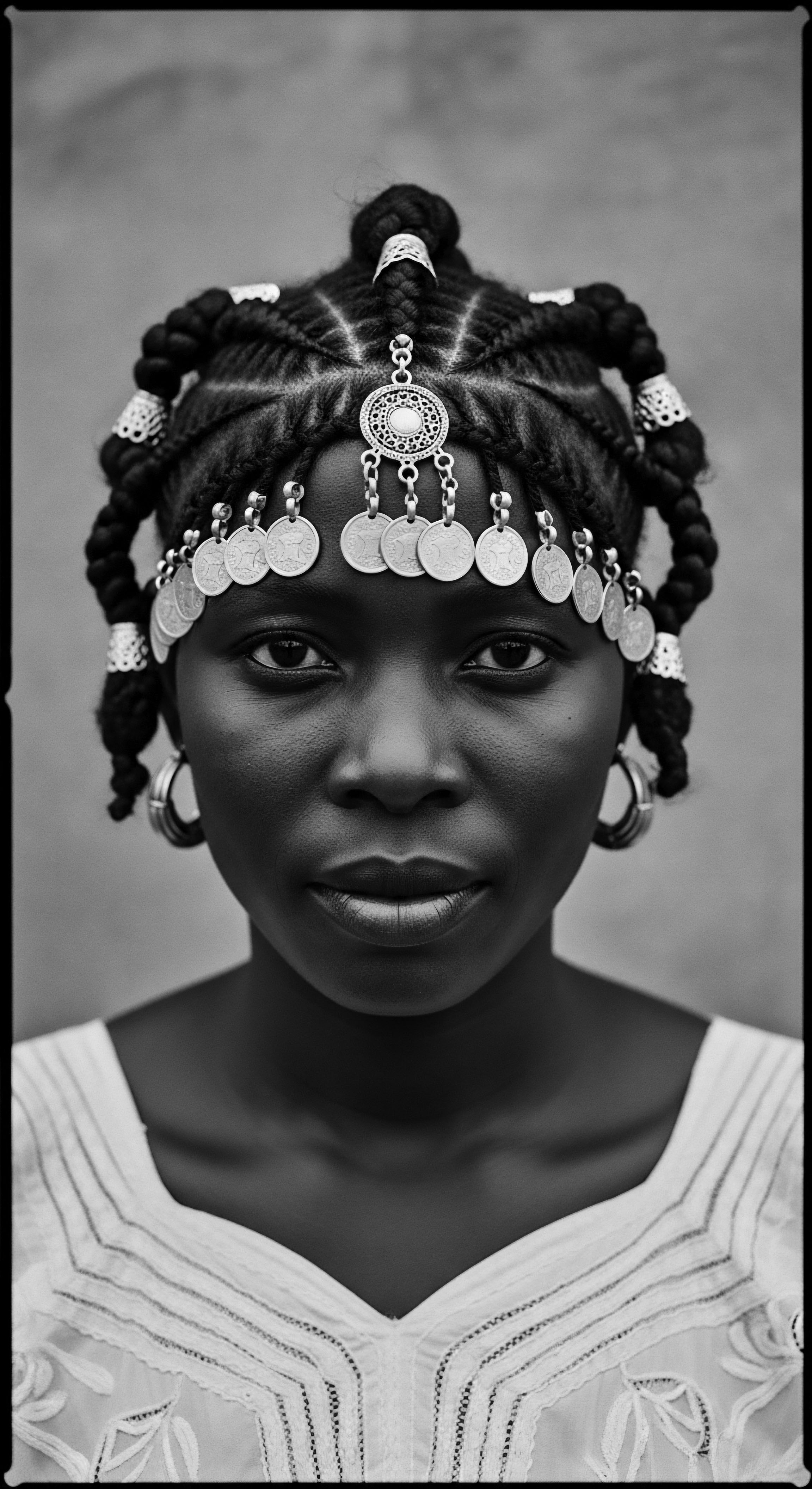
Ancestral Hair Nomenclature
The naming conventions for hairstyles in various African cultures reflect a world where hair was deeply intertwined with daily life, cosmology, and social order. These names were not arbitrary labels; they were mnemonic devices, cultural touchstones, and sometimes, even poetic descriptions. The Yoruba, for example, had names like Sùkú, a style with braids forming a raised, basket-like shape, symbolizing elegance and worn by young women and brides during significant ceremonies (DiscoverYorùbá!, 2024).
Another style, Ìpàkó-Elédè, meaning “pork head,” featured hair braided backward from the front, a sign of youth (DiscoverYorùbá!, 2024). This lexicon highlights a society where hair was read like a book, each style a chapter, each adornment a punctuation mark in a larger cultural story.
| Traditional Style/Concept Sùkú |
| Cultural Group Yoruba (Nigeria) |
| Historical Significance Symbolized sophistication and elegance, often worn by young women and brides for ceremonial occasions. Indicated femininity and preparedness for new responsibilities. |
| Traditional Style/Concept Dreadlocks with Ochre |
| Cultural Group Himba (Namibia) |
| Historical Significance Represented connection to the earth and ancestors; denoted age and marital status within the community. |
| Traditional Style/Concept Cornrows as Maps |
| Cultural Group Afro-Colombian Communities |
| Historical Significance Coded escape routes and messages during slavery, allowing individuals to navigate to freedom. |
| Traditional Style/Concept Dada |
| Cultural Group Yoruba (Nigeria) |
| Historical Significance A style of matted hair, often worn in honor of the deity Olokun, reflecting spiritual connection. |
| Traditional Style/Concept These examples represent a fraction of the vast and diverse interpretations of hair, showcasing its enduring role in ancestral life. |

Ritual
The historical shifts that swept across Africa and its diaspora brought immense challenges, yet the heritage of textured hair care and styling persevered. The rituals surrounding hair became more than mere routines; they transformed into acts of cultural affirmation, quiet defiance, and communal bonding. In times of profound disruption, the tender act of braiding, twisting, and adornment became a sacred space where ancestral knowledge was transferred, stories were shared, and identity was reinforced.
Consider the profound role of communal hair practices in maintaining social cohesion. Hairdressing was rarely a solitary act. It was a social opportunity, a time for families and friends to gather, to share news, and to transmit wisdom from elder to youth. This tradition still holds true in many communities today (Afriklens, 2024).
The intricate process of styling, which could take hours or even days, involved washing, combing, oiling, and braiding or twisting, often adorned with cloth, beads, or shells (Afriklens, 2024). Such gatherings solidified social bonds and ensured the continuation of techniques and meanings through oral tradition.

How Did Styling Techniques Transmit Knowledge?
The very act of creating these styles was a lesson in cultural continuity. Hands moved with purpose, guided by generations of accumulated knowledge. Braiding, in particular, transcended its aesthetic purpose to become a medium for communication, especially during periods of forced displacement and enslavement.
The cornrow, a style of tightly braided rows lying flat against the scalp, stands as a testament to this ingenuity. Its origins trace back thousands of years in African culture, with depictions dating to 3500 BC in rock art found in southeastern Algeria (BLAM UK CIC, 2022).
During the transatlantic slave trade, when millions of Africans were brutally ripped from their homes and often forced to shave their heads to strip them of their cultural identity, cornrows became a covert tool of resistance. In Colombia, for example, enslaved individuals utilized cornrow patterns to create maps and convey messages about escape routes or safe houses (Afriklens, 2024; Travel Noire, 2021). The Afro-Colombian Tradition of braiding cornrows remains alive, with styles such as Departes, thick braids tied into buns, signaling plans for escape (Ancient Origins, 2022; The Daily Scrum News, 2025).
This ingenuity, born from extreme oppression, allowed people to pass vital information without written language, maintaining a lifeline to freedom and identity. Seeds and gold nuggets were even hidden within these braids to aid survival after escape (Fulham Palace, 2023; The Daily Scrum News, 2025).
The cornrow, a seemingly simple style, transformed into a covert communication system, weaving maps of freedom into the very hair of those seeking liberation.

The Role of Protective Styles Through Change
As African people faced forced migration and the pressures of assimilation, protective styling became a cornerstone of cultural preservation. Styles like cornrows, braids, and twists, which shielded the hair from environmental damage and manipulative handling, were practical choices that also served as acts of quiet defiance against Eurocentric beauty standards. These styles allowed individuals to maintain their ancestral hair forms, resisting the pressure to conform to imposed appearances. The continuation of these practices, despite discrimination, became an assertion of pride in African heritage (Afriklens, 2024).
The concept of “protective styling” therefore extends beyond physical care. It describes a deep historical continuity in how textured hair was worn and cherished, even under duress. This ranged from practical measures for working in fields to maintaining a “neat” appearance as mandated by colonizers, yet always with an underlying adherence to inherited forms (Fulham Palace, 2023).
- Cornrows ❉ Tightly braided rows lying flat against the scalp, historically used for status, communication, and as covert maps during enslavement.
- Twists ❉ Two strands of hair wrapped around each other, offering a gentle, low-tension style that protects ends and retains moisture.
- Bantu Knots ❉ Small, coiled buns secured close to the scalp, originating from the Bantu people, a celebration of cultural beauty and resilience.
| Tool Category Combs (Afrocombs) |
| Historical Use/Origin Ancient African societies (wood, bone, ivory) |
| Cultural Connection Functional and symbolic, often intricately carved to reflect social codes or spiritual aspirations. |
| Tool Category Hair Picks/Pins |
| Historical Use/Origin Used for styling, detangling, and ornamentation |
| Cultural Connection Beyond utility, these could signify status or affiliation when adorned with precious materials. |
| Tool Category Beads and Cowrie Shells |
| Historical Use/Origin Adornments for braids, locs, and twists across many African groups |
| Cultural Connection Symbolized wealth, beauty, fertility, and connection to ancestral spirits; frequently seen in Fulani braids. |
| Tool Category Natural Oils and Butters |
| Historical Use/Origin Derived from native plants (e.g. shea, palm, frankincense) |
| Cultural Connection Provided moisture, protection, and nourishment; represented ancestral knowledge of natural resources. |
| Tool Category These implements are not merely functional objects; they are custodians of history and artistry within textured hair heritage. |
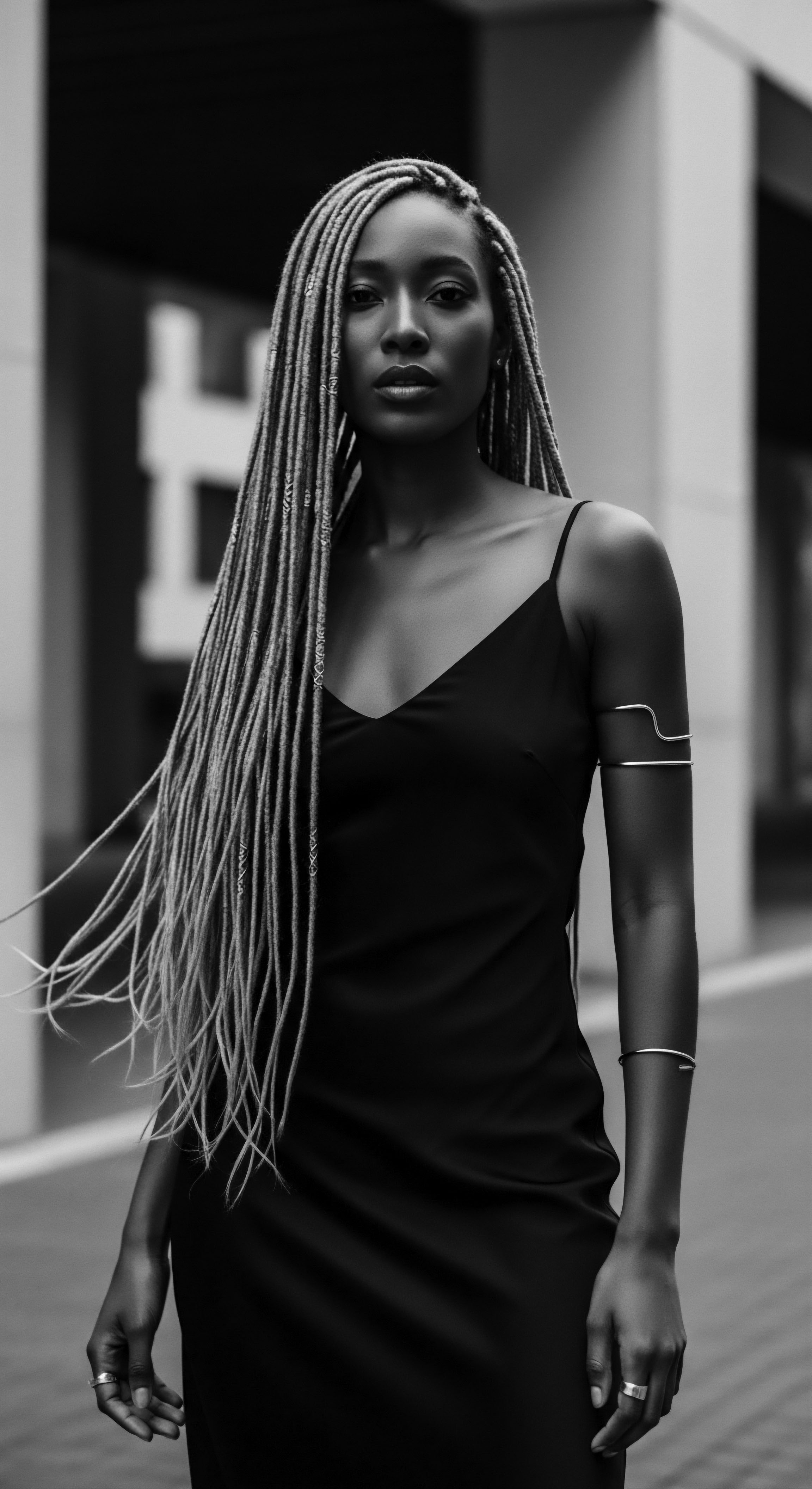
Relay
The passage of time did not diminish the significance of African hairstyles; it rather amplified their role as symbols of identity and enduring heritage. From the quiet acts of resilience during enslavement to the loud declarations of pride in modern movements, hair has continuously served as a medium for communicating cultural narratives and asserting self-determination. This continuity reflects a profound understanding of hair as an extension of self, a visible link to ancestry and collective memory.
The intricate relationship between African hair and social movements offers a compelling study of cultural persistence. The natural hair movement, particularly prominent since the mid-20th century, stands as a powerful demonstration of this. The Afro, for instance, became a potent emblem during the Civil Rights Movement in the 1960s and 1970s. It was a hairstyle that celebrated the natural kink and curl, directly confronting and rejecting imposed Eurocentric beauty standards.
This was more than a fashion trend; it was a political statement, a visual declaration of Black pride and activism (Afriklens, 2024; Safo Hair, 2024). The decision to wear one’s hair in its natural form was, and often remains, an act of resistance to Western beauty ideals (Hair in African Art and Culture, 2000).

How Does Modern Science Validate Ancestral Hair Care?
Contemporary scientific understanding often mirrors the wisdom embedded in ancestral hair care practices. The biology of textured hair, with its unique challenges, finds its answers in techniques and ingredients used for centuries. Modern hair science confirms the importance of moisture retention for coiled hair, explaining why traditional practices like oiling and sealing were so effective.
The very structure of tightly coiled hair makes it prone to dryness and breakage if not properly cared for. Ancestral knowledge, passed down through generations, developed regimens that instinctively catered to this, utilizing natural emollients and humectants long before their scientific classification.
For instance, the use of plant-based ingredients like Aloe Vera, Moringa Oil, and Honey, which were staples in ancient African beauty rituals, are now recognized for their moisturizing, antibacterial, and antioxidant properties (Sharaibi et al. 2024; Unlocking Ancient African Beauty, 2024). Research on plants used for hair health in communities like Afar in Northeastern Ethiopia documents species like Ziziphus Spina-Christi and Sesamum Orientale, used for cleansing, dandruff, and styling (Woldu et al.
2025). This convergence of traditional practice and scientific validation underscores the authority and efficacy of ancestral wisdom.
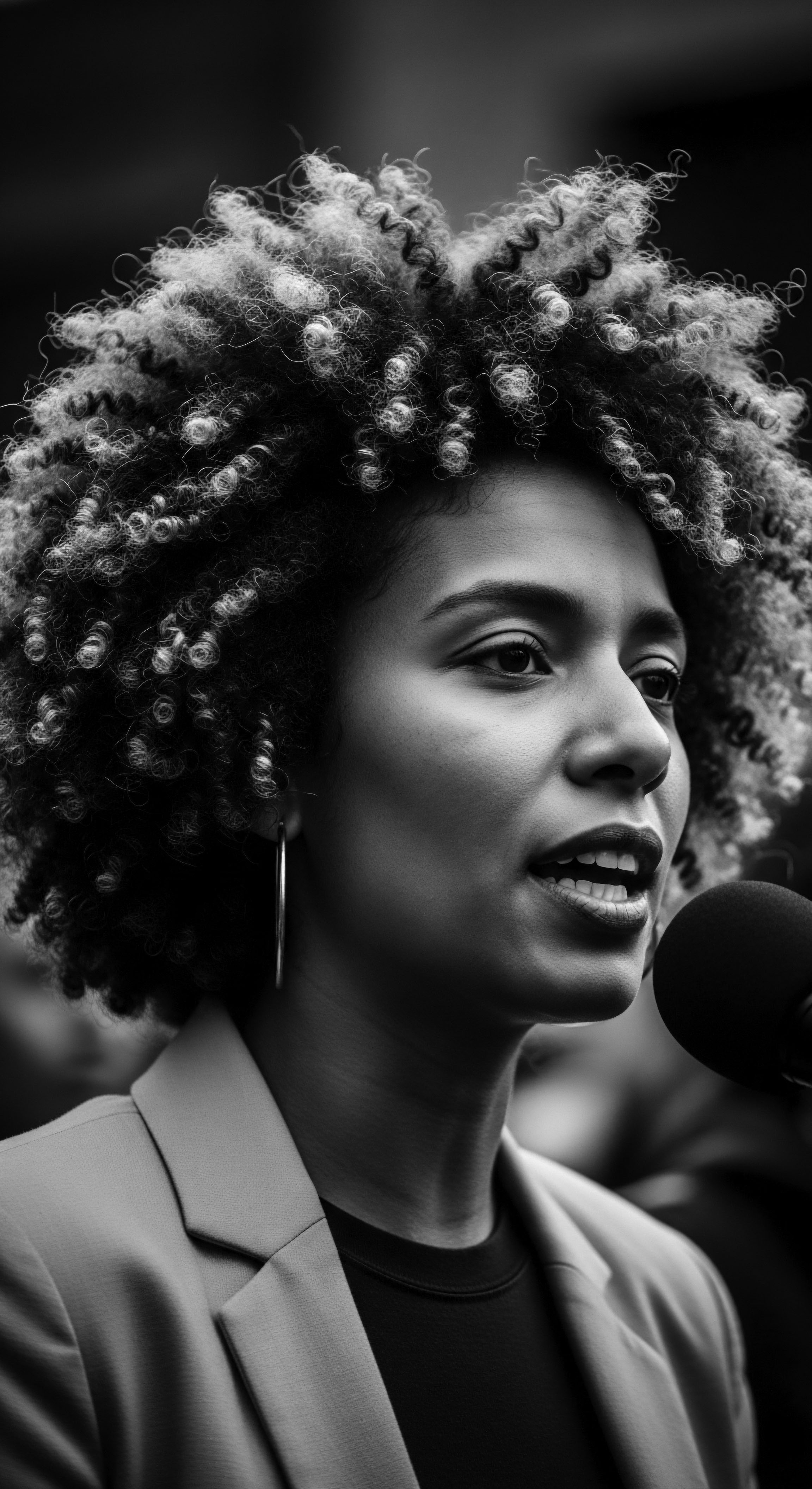
What Is The Interplay of Hair and Self-Determination?
The history of textured hair is inextricably linked to narratives of self-determination, particularly for Black and mixed-race communities. Through periods of colonization, slavery, and ongoing discrimination, the ability to control one’s own hair became a profound act of agency. During the era of slavery in Colombia, the Maroons, escaped enslaved Africans, established independent villages like San Basilio de Palenque (Ancient Origins, 2022). Their leader, King Benkos Biohó, reportedly devised a sophisticated intelligence network where women communicated escape routes through intricate cornrow patterns (Ancient Origins, 2022; Travel Noire, 2021).
The style named “departes,” with its thick, tight braids tied into buns, signaled plans for escape, while curved braids indicated roads, and other patterns even hid seeds or gold for survival (The Daily Scrum News, 2025; Fulham Palace, 2023). This remarkable ingenuity highlights how hair became a tool for liberation, literally charting pathways to freedom. (Tharps & Byrd, 2001) wrote extensively on this topic in their acclaimed work, Hair Story ❉ Untangling the Roots of Black Hair in America.
Hair has stood as a defiant banner, its styles evolving from silent resistance to bold declarations of cultural pride and individual autonomy.
This historical use of hair as a form of coded communication and resistance continues to reverberate in contemporary contexts. Modern movements, such as the CROWN Act in the United States, seek to legislate against hair discrimination, reinforcing the idea that the right to wear traditional African hairstyles is a fundamental expression of identity and heritage (Afriklens, 2024). These efforts demonstrate the ongoing struggle for recognition and respect for textured hair, acknowledging its deep-seated cultural importance beyond mere aesthetics.
- Afro ❉ A symbol of Black pride and political activism, particularly during the Civil Rights Movement, affirming natural hair texture.
- Locs (Dreadlocks) ❉ Hold deep spiritual and cultural significance in many African and diasporic communities, symbolizing connection to spirituality and heritage.
- Headwraps ❉ Versatile head coverings worn across Africa and the diaspora, often signifying identity, faith, marital status, or social standing.
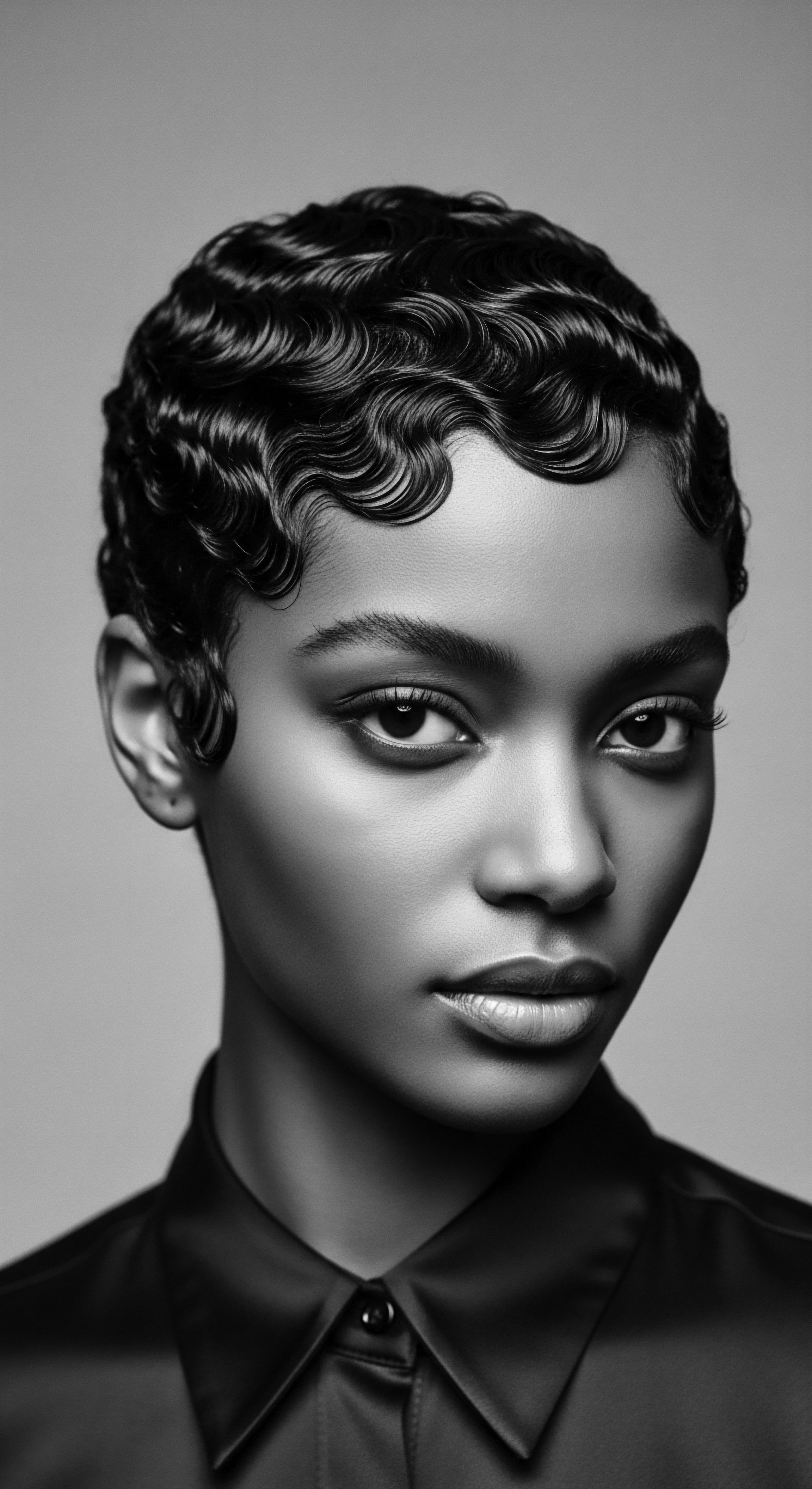
Reflection
The journey of textured hair through history is a testament to the profound resilience of cultural identity. It is a living, breathing archive of ancestral wisdom, communal strength, and individual spirit. Each coil, each braid, each chosen style carries echoes of a past where hair was a language, a map, a symbol of defiance, and a celebration of self. From the ancient reverence for the hair’s sacred biology to its strategic role in navigating oppressive systems, and its resurgence as a beacon of pride today, textured hair has never been simply about outward appearance.
It embodies a continuous dialogue between elemental biology, ancestral practices, and the evolving spirit of a people. Roothea’s ‘Soul of a Strand’ ethos recognizes this deep truth ❉ that caring for textured hair is a connection to a profound heritage. It calls us to honor the wisdom of those who came before, to understand the intricate dance between structure and sustenance, and to carry forward a legacy of beauty, strength, and unwavering identity. In every textured crown, the unbound helix continues its story, a vibrant testament to heritage sustained across centuries.

References
- Akinbola, B. O. & Akinbola, O. O. (2023). Hairdressing and Hairstyles in Yorubaland ❉ History, Nature, Dynamics and Significance. International Journal of Management Sciences and Business Research, 12(1), 1-13.
- Afriklens. (2024, November 1). African Hairstyles ❉ Cultural Significance and Legacy.
- BLAM UK CIC. (2022, September 15). The history of Black Hair.
- DiscoverYorùbá!. (2024, December 23). 7 Beautiful Traditional Yoruba Hairstyles.
- Fulham Palace. (2023). Hair.
- Ibiene Magazine. (2022, December 5). African hairstyles and the road to escape….
- Jidekaiji Media. (2024, November 21). The Significance of African Hair!
- Safo Hair. (2024, February 7). Unveiling the Significance of Hairstyles in Black Communities.
- Shanghie, S. (2019, February 27). When a Hairstyle Is… Freedom. Truth Be Told.
- Sharaibi, O. J. Oluwa, O. K. Omolokun, K. T. Ogbe, A. A. & Adebayo, O. A. (2024). Cosmetic Ethnobotany Used by Tribal Women in Epe Communities of Lagos State, Nigeria. Journal of Complementary Medicine & Alternative Healthcare, 12(4).
- The Daily Scrum News. (2025, February 18). BLACK HISTORY FACTS ❉ The Secret History Of Cornrows ❉ How This Ancient Hairstyle Helped Slaves Escape.
- Travel Noire. (2021, May 20). How Braids Were Used By Enslaved People To Escape In South America.
- Unlocking Ancient African Beauty Traditions ❉ A Tribute to Black History Month with Timeless Indigenous Ingredients for Radiant Skin and Hair. (2024, February 1).
- Woldu, T. Araya, S. Abraha, G. & Fisha, K. (2025). Plants used for hair and skin health care by local communities of Afar, Northeastern Ethiopia. Ethnobotany Research and Applications.
- Ancient Origins. (2022, November 30). African Slaves Used Braids to Communicate Escape Routes in Colombia.
- Tharps, L. L. & Byrd, A. (2001). Hair Story ❉ Untangling the Roots of Black Hair in America. St. Martin’s Griffin.
